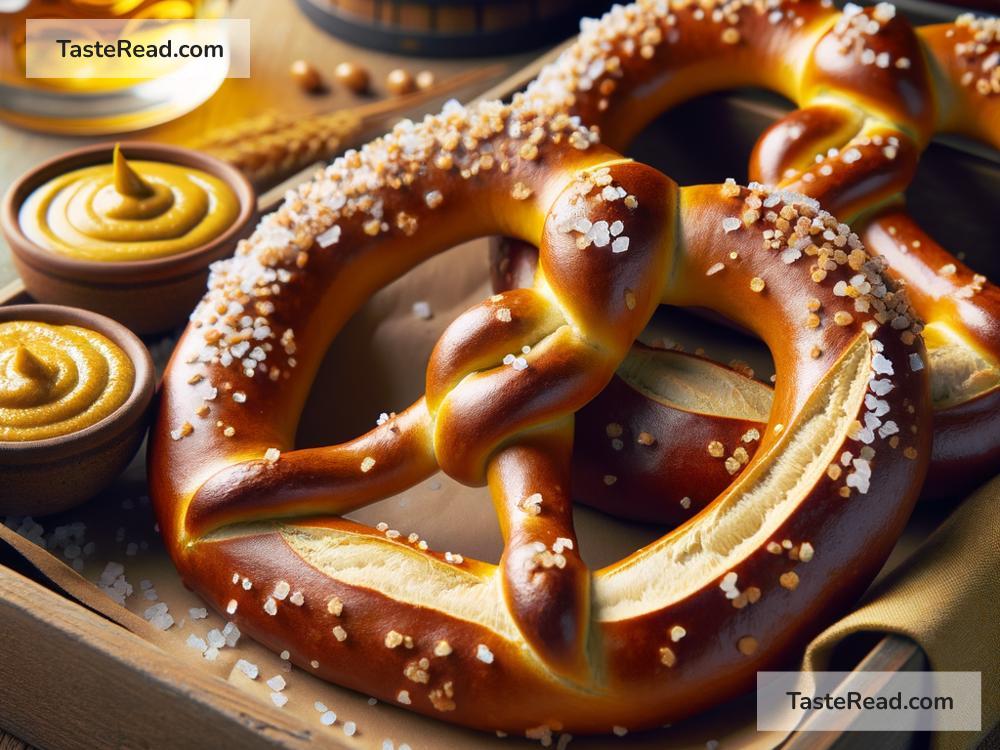The Story of German Pretzels: A Tasty Tale
Pretzels are one of the most loved snacks around the world, but did you know they have a long and interesting history? These twisty, salty treats originally came from Germany, and they carry stories of faith, tradition, and joy. Let’s dive into the origins of pretzels and explore how they became a symbol of German culture.
Where Did Pretzels Come From?
The story of pretzels began more than 1,300 years ago in Europe. Historians believe they were created by monks in Southern Germany or Italy during the Middle Ages. Back then, monks would bake simple breads as part of their daily life. Using leftover dough, some clever monk twisted it into the shape of a figure with crossed arms, mimicking the way people folded their arms in prayer.
The name “pretzel” is thought to come from the Latin word “bracchiola,” meaning “little arms.” The original pretzels didn’t have the salty topping we know today. Instead, they were simple, soft breads made with flour, water, and a little bit of yeast.
Pretzels became an important part of religious traditions. The three holes in the pretzel’s shape were said to represent the Holy Trinity in Christianity: the Father, the Son, and the Holy Spirit. During Lent—a 40-day period when Christians avoided certain foods—pretzels were a popular snack since they were made without eggs, milk, or butter, which were not allowed during the fasting period.
Pretzels in Germany
Germany became famous for its pretzels, and today they are considered a national treasure. In German, pretzels are called “Brezeln,” and they come in many varieties. The two most common types are soft pretzels, which are often served fresh from the oven, and hard pretzels, which are crunchy and sold as snacks.
By the 14th century, pretzels were a common sight in Germany. Bakers carefully crafted large pretzels to sell during fairs and markets. Pretzels also played a role in important celebrations and traditions. In some areas, they symbolized good luck and prosperity. For example, it was customary to hang pretzels on Christmas trees as ornaments or give them to children as a New Year’s gift.
One famous German pretzel story comes from the region of Swabia. In the 15th century, Duke Albrecht of Württemberg was unhappy with his bakers and demanded they create a new type of bread within three days. He wanted the bread to be soft, golden, and allow sunlight to pass through three holes. The crafty bakers twisted the dough into the iconic pretzel shape we know today, saving their reputation and winning the Duke’s approval.
The Secret Behind Pretzels: Lye
One thing that makes pretzels unique is their shiny brown crust. This special look comes from dipping the pretzels in a lye solution before baking. Lye is a food-safe alkaline liquid that reacts with the dough and gives pretzels their distinct flavor and color. Some people find it surprising because lye is also used in cleaning products, but when handled properly, it’s safe to eat and essential for making authentic pretzels.
This technique is said to have originated in Germany. Once the lye-dipped pretzels were baked, they became even more popular, known for their crisp outside and fluffy inside. Today, lye is still used by professional bakers to make traditional pretzels, though home bakers often use baking soda as a safer substitute.
Pretzels Around the World
Pretzels didn’t stay in Germany for long. As German immigrants moved to other countries, they brought their pretzel-making skills with them. In the 18th century, pretzels arrived in America, especially in Pennsylvania, where many German immigrants settled. Pretzels became a local favorite, and Pennsylvania is still famous for its pretzel industry today.
Over time, pretzels evolved in different ways around the world. In Germany, you can find giant soft pretzels served with butter, mustard, or cheese at Oktoberfest. In America, baseball games often sell soft pretzels topped with cinnamon sugar or dipped in nacho cheese sauce. Hard pretzels come in various shapes, from traditional twists to sticks and even bite-sized pieces.
Pretzels have gone beyond being a snack. They’re celebrated as part of food history and cultural traditions. Germany honors its pretzel heritage with local bakeries that pass down recipes from one generation to the next.
Why Do People Love Pretzels?
There’s something special about pretzels that captures the hearts of people everywhere. Maybe it’s their satisfying crunch, their soft and chewy texture, or their unique salty topping. Pretzels are simple yet comforting, making them a favorite for parties, holidays, and everyday snacking.
For Germans, pretzels are more than food—they’re a symbol of culture and community. Visiting a bakery in Germany and enjoying a freshly baked pretzel is a cherished experience for locals and tourists alike.
Conclusion
The story of German pretzels is one of creativity and tradition. From humble beginnings as a monk’s prayer-inspired twist of dough to a global snack enjoyed by millions, pretzels have come a long way. They remind us of the deep connection between food and culture, and the joy simple bread can bring to our lives.
The next time you take a bite of a pretzel, think about its amazing journey—a treat that started centuries ago and continues to bring people together today. Whether soft or crunchy, plain or topped, pretzels are truly a timeless favorite.


